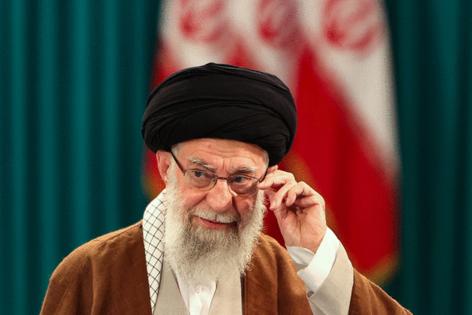Commentary: Intervening in Iran is a recurring US fantasy
Published in Op Eds
The seizure of 52 American diplomats as hostages at the U.S. Embassy in Tehran confronted former President Jimmy Carter with the question of whether to intervene militarily to free them. Nearly a half-century on, the same Islamic Revolutionary Republic of Iran has presented President Donald Trump with a similar dilemma as he weighs continuing Israel’s bombing assaults against Iran.
The Israeli strikes, punctuated by U.S. bunker bombs, bring risks of unintended consequences, as Mideast wars frequently do. Carter was able to resolve his crisis without a single hostage killed, though it took more than a year and damaged his popularity.
But today’s escalating tensions go back to 1953, when British oil companies and the CIA orchestrated a coup and installed the Shah of Iran, a secular ruler willing to accommodate Big Oil and other corporate interests in the West.
That covert intervention brought something few in Washington had considered: decades of suppression of anyone deemed as an opponent of the Shah’s brutal regime. A quarter century later, after the U.S. puppet fell from power, the Ayatollah Khomeini returned from two decades in exile to proclaim a fundamentalist theocracy that was no less repressive. The liberal segments of society that might have resisted his rule had been wiped out.
When hostages were seized in 1979, a prominent anti-discrimination attorney in New York, Paul O’Dwyer, justified taking the Islamic Revolutionary Republic as a client. The case, filed in Manhattan, was an attempt by the Khomeini government to recover the ill-gotten gains the Shah allegedly diverted from the Iranian treasury.
Though assailed by conservatives for taking the case, O’Dwyer, who was known for activism on behalf of underdogs and had served as City Council president, was largely untroubled, saying everyone deserved a fair trial, and the alleged looting of public funds was a valid concern.
O’Dwyer “couldn’t possibly approve of the hostage-taking,” he told Daily News columnist Earl Caldwell, adding, “But by the same token, I couldn’t possibly approve of (former Secretary of State John) Foster Dulles and the CIA to put a tyrant on top of a people who were there 10,000 years before Christ.”
Today, in place of O’Dwyer’s lofty principles comes the dropping of so-called bunker bombs and talk in Washington of regime change for Iran. One might ask: Are the Iranian people really going to rise up en masse against their repressive 86-year-old ruler, and so successfully as to cause little collateral damage regionally?
An affirmative answer to that question rings as hollow as the once-prominent neoconservative promise that U.S. forces would be greeted as “liberators” after Iraqi strongman Saddam Hussein was overthrown, or that the American military could make quick work of Afghanistan for harboring Osama Bin Laden.
Iran’s widely-spread nuclear infrastructure is heavily fortified. The nearly bomb-grade uranium stocks that Iran harbors constitute “a moving target” that the International Atomic Energy Agency finds challenging to account for, Bloomberg reports.
But whether or not the material needed for nuclear power is being diverted for nuclear weaponry remains unclear.
Trump set Washington on the course leading to the current crisis, since he pulled the plug on the 2015 nuclear deal worked out under Barack Obama. When he tried to restart talks recently, Israeli Prime Minister Benjamin Netanyahu deliberately interrupted the negotiations, initiating days of bombings. Those air attacks touched off lethal volleys between Iran and Israel.
Despite Trump’s authorization Saturday of “bunker-buster” bombs, experts caution that Iran’s underground enrichment sites have been intentionally constructed to withstand attacks. There are fears of radiation release. The Iranian Revolutionary Guards could respond in any number of ways, such as closing the Strait of Hormuz. As in the Carter years, the American consumer would suffer higher oil prices.
The modern history of the Middle East is replete with overly ambitious military ventures — the 1956 Suez crisis, the 1982 Israeli invasion of Lebanon, the U.S. “war on terror,” to name some of them — and far less-than-desirable results or exit strategies.
But at one point in O’Dwyer’s own entanglement with the Revolutionary Republic of Iran, he boarded a plane to Tehran to meet with the new government on the legal case. A cousin recalled that his progressive relative and boss hoped to toss a Hail Mary pass and single-handedly resolve the lingering hostage crisis.
Alas, it was not to be.
Big dreams, be they conciliatory or hawkish, die hard in Iran.
_____
Polner and Tubridy are the co-authors of “An Irish Passion for Justice: The Life of Rebel New York Attorney Paul O’Dwyer,” published by Cornell University Press/Three Hills.
_____
©2025 New York Daily News. Visit at nydailynews.com. Distributed by Tribune Content Agency, LLC.

























































Comments